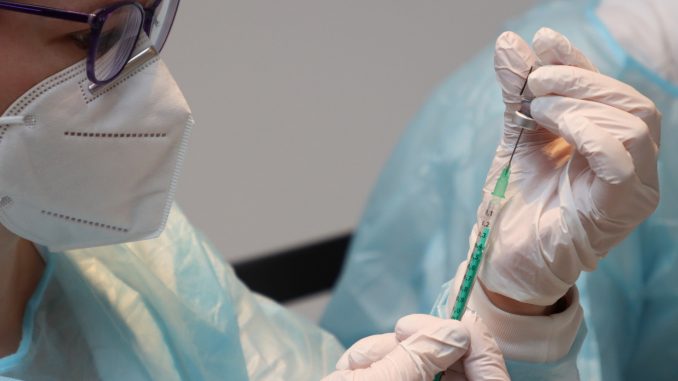
The news that late-stage trials of German biotech firm CureVac’s Covid-19 vaccine yielded only 47% efficacy has been met with dismay by scientists, policymakers and company shareholders alike. Falling short of the 50% efficacy threshold specified by the US’s Food and Drug Administration (FDA) and even further below the World Health Organization’s (WHO’s) 70% target, CureVac’s seeming failure is a major blow to global vaccination efforts around the globe.
Although there are a handful of highly effective first-generation vaccines which are being rolled out, the world is hungry for second-generation jabs which are both cheaper and easier to handle. The issue is especially acute among developing nations, who are desperate for a shelf-stable, affordable alternative which can be rapidly produced. Fortunately, there are a number of other promising candidates in development which could fill that need. After the disappointment of the CureVac revelations, their contributions could prove to be more vital than ever.
CureVac results a challenge for developing world in dire vaccine need
There are divergent opinions on exactly what went wrong with the CureVac vaccine. Its makers have blamed the plethora of Covid-19 variants, with just 1% of those infected during the trial displaying the original virus sequence. The remaining 99% contracted some form of mutation, with the Alpha variant (first observed in the UK) the most prevalent among the 40,000 volunteers in the study. However, some scientists are skeptical about this theory, pointing to the 92% efficacy which the Pfizer vaccine shows against the Alpha variant. Instead, they believe it may have been CureVac’s decision to use unmodified mRNA in their vaccine code – originally touted as a selling point by the company – which has inhibited antibody production in test subjects.
Whatever the reason, the ramifications of the candidate’s poor performance will be felt around the world. The EU had already ordered over 400 million doses of the vaccine which it was hoping to use as booster jabs. Such wealthy regions, of course, are fortunate in their ability to pivot to other, more expensive but more effective alternatives—just days after the disappointing CureVac results, the EU confirmed that it was exercising an option to buy another 150 million Moderna shots, though Brussels insisted that the choice was unrelated to CureVac’s less-than-stellar efficiency.
Indeed, it’s among poorer nations that the effects of CureVac’s failure will be most keenly experienced. The WHO has already warned that vaccine supplies are running out in such areas and the Covax program intended to alleviate those issues has delivered a mere 90 million of the two billion doses it is targeting by the end of the year. In Africa, for example, only 40 million jabs have been administered – equivalent to just 2% of the continent’s population, even as the region faces a devastating surge in Covid cases. At least half of the low-income nations involved in the Covax initiative do not have access to sufficient supplies, while places like Bangladesh, Trinidad and Tobago, Uganda and Zimbabwe have already reported running out.
Second-generation candidates could hold key
With that in mind, it’s imperative that a surge of second-generation vaccines rise to meet the demand. Thankfully, there does appear to be a raft of promising candidates in the pipeline. Massachusetts-based Akston Biosciences, for example, dosed its first patient with its next-generation vaccine AKS-452—which has already shown encouraging results in trials on non-human primates— in a phase I/II trial in the Netherlands earlier this year. Akston’s vaccine candidate, which targets a part of the coronavirus spike protein which is less likely to mutate, is capable of retaining its potency for four months at 25°C or one month at 37°C, making it particularly ideal for the developing world where storage and distribution infrastructure is sorely lacking. AKS-452 also lends itself well to rapid upscaling, with manufacturers estimating that a single 2,000-litre production line could produce up to one billion doses per year.
Elsewhere, Thailand recently started human trials for two of its four homegrown vaccine candidates. The southeast Asian country was initially praised for its impressive handling of the pandemic, with scant diagnoses and deaths until a third wave hit in April of this year. As caseloads threatened to spiral out of control, Thailand scrambled to secure deals with major vaccine producers such as Pfizer, Moderna, Sinopharm and Johnson & Johnson, yet the Thai government is keen to promote self-sufficiency and future-proof the country against any further variants, with the two homemade candidates in trials hoped to be ready for mass production by next year.
Meanwhile, researchers from the University of North Carolina are pursuing a particularly ambitious project. Although it is not yet as advanced as some other alternatives, the scientists are developing a “universal” mRNA vaccine which could theoretically target not only Covid-19, but a raft of other coronaviruses as well. Encouraging results in mice trials are to be followed up with human trials next year, offering hope that the candidate could provide immunity against variants and potentially prevent future pandemics.
Diversification and innovation needed to vanquish virus
The fact that there are so many second-generation vaccine candidates in development, displaying such positive initial indications, is certainly a reason to be cheerful about the medium-term outlook for the global defense against the disease.
Indeed, even CureVac itself has already dusted itself down from the setback of its first vaccine and is ploughing ahead with a second formulation it’s developing in tandem with GSK. It is this innovation among the second generation of vaccines – which promise to be more affordable, easier to store, distribute and administer, have fewer side effects and be able to be produced more efficiently – which will provide the boost that the medical community needs in overcoming both the current pandemic and any future outbreaks.


Leave a Reply